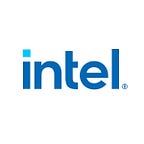Helping Teachers Plug Kids into the Maker Movement
New Arduino electronics, powered by the tiny Intel Curie compute module, and easy-to-follow guide offer today’s students hands-on experiences that develop 21st-Century skills.
It comes in a box — all the parts and a series of experiments teachers can use to help students learn how to build electronics.
That’s how Massimo Banzi simply describes the kit and instructional program his company has developed that will soon include the new Arduino 101 development board (called Genuino 101 outside the U.S.) he co-created with Intel.
“We designed it in a way so that it’s approachable for a beginner, but then it gives you a lot of things you can work on down the line,” said Banzi.
For teachers, this is a recipe and ingredients for blowing open new possibilities for today’s youth, who are facing a future fueled by digital innovation.
Arduino 101 will be incorporated into the Creative Technologies in the Classroom (CTC) physical computing course developed and tested by Arduino. Banzi’s team calls it the world’s first physical computing course for elementary and secondary classrooms, and it’s currently used by more than 300 schools around the world.
The Arduino 101 development board, featuring the tiny Intel Curie compute module, was introduced in October at Maker Faire Rome. It will be available with the full classroom kit or independently, for around $30 in early 2016.
“No matter what you are involved with, digital technology is going to be part of your life,” said Massimo Banzi, co-founder of Arduino, the nifty open source hardware popular with Makers.
With the kit, anyone can turn their ideas into new realities using digital technologies. It’s happening today with things like robots and drones, many of which are powered by the family of Arduino microcontrollers Banzi co-invented in Italy a decade ago.
“With this kit, essentially you can learn the basics of Arduino, but then you can go further,” said Banzi in an interview, standing atop the Hall of Science during MakerCon New York.
Teaching kids science and technology theory is essential, but these new kits help teachers put theory into practice with hands-on electronics-making experiments, according to John Galvin, vice president and the general manager of the Intel Education team.
For him, innovation in education requires more than having access to laptops and tablets in class to foster 21st century learning skills. He sees the Arduino 101 kits addressing a major challenge as education is transformed by technology.
“There’s a rapid transformation going on in education,” said Intel’s John Galvin, who believes hands-on learning is increasingly important for students.
“It’s about getting tools that educators can implement cost effectively so all of their students have a similar hands-on experience that develops critical thinking and collaboration skills, but most importantly their problem solving skills,” explained Galvin.
He said school is the only place where many students can try the latest technology. They get to 3D print objects for the first time and even create their own electronics using circuit boards and computer code.
“We know that when students have hands-on experience, when they can really touch something, take it apart and rebuild it this reinforces the overall learning experience,” said Galvin.
Banzi draws from his own experience.
“Back when I was a kid, the coolest thing was building a radio,” he said. “We could build a radio in five minutes. That was very powerful for me.”
He said Arduino was built around the idea that people need to be able to build something quickly. This is essential for learning, growing curiosity and gaining skills that will help students shape their future.
Banzi is a progenitor of the Maker Movement, which sprouted from do-it-yourself technology tinkerers, who are finding powerful and smaller electronic components become more affordable and readily available.
Driven by the desire to fix rather than replace and to build things on their own, the Maker Movement is thriving in large part because of recent innovations.
Arduino’s open hardware and the open source software community that uses it play a big part in the growing Maker Movement, which is known for using the internet to publically collaborate. They share code, design blue prints and tips for creating digital devices, many of which never existed before.
The Intel Curie module that powers the Arduino 101 board is a tiny collection of computer capabilities integrated into the size of a small button. The Curie technology was first introduced at the Consumer Electronics Show in January 2015, and Arduino 101 is the first widely available development board powered by it.
“The Intel Curie compute module adds advanced features and a level of performance to the standard entry-level microcontroller that opens new possibilities for smart, connected creations,” said Josh Walden, senior vice president and general manager of Intel’s New Technology Group.
Advanced features include a Bluetooth low-energy radio for connectivity, 6-axis gyroscopic and accelerometer sensors, and a power management unit.
Wireless connectivity allows the board to be remotely controlled by mobile phones, tablets or interact with other electronics.
Banzi is a progenitor of the Maker Movement, which is driven by people with ideas for building new things. He said more than ever the necessary tools are available so that anyone at any age can prototype, manufacture and bring ideas to market.
“There’s never been a better time to be a maker.”
Editor’s note: Click these links to learn more about Intel Education efforts around the world and the Intel Curie module, which is a low-power collection of computing technologies designed for always-on, internet connected devices. Prototype devices built with the Intel Curie module will be featured on America’s Greatest Makers, a reality TV show being produce by United Artists CEO Mark Burnett with Intel.
A shorter version of this article originally appeared on iQ by Intel.
